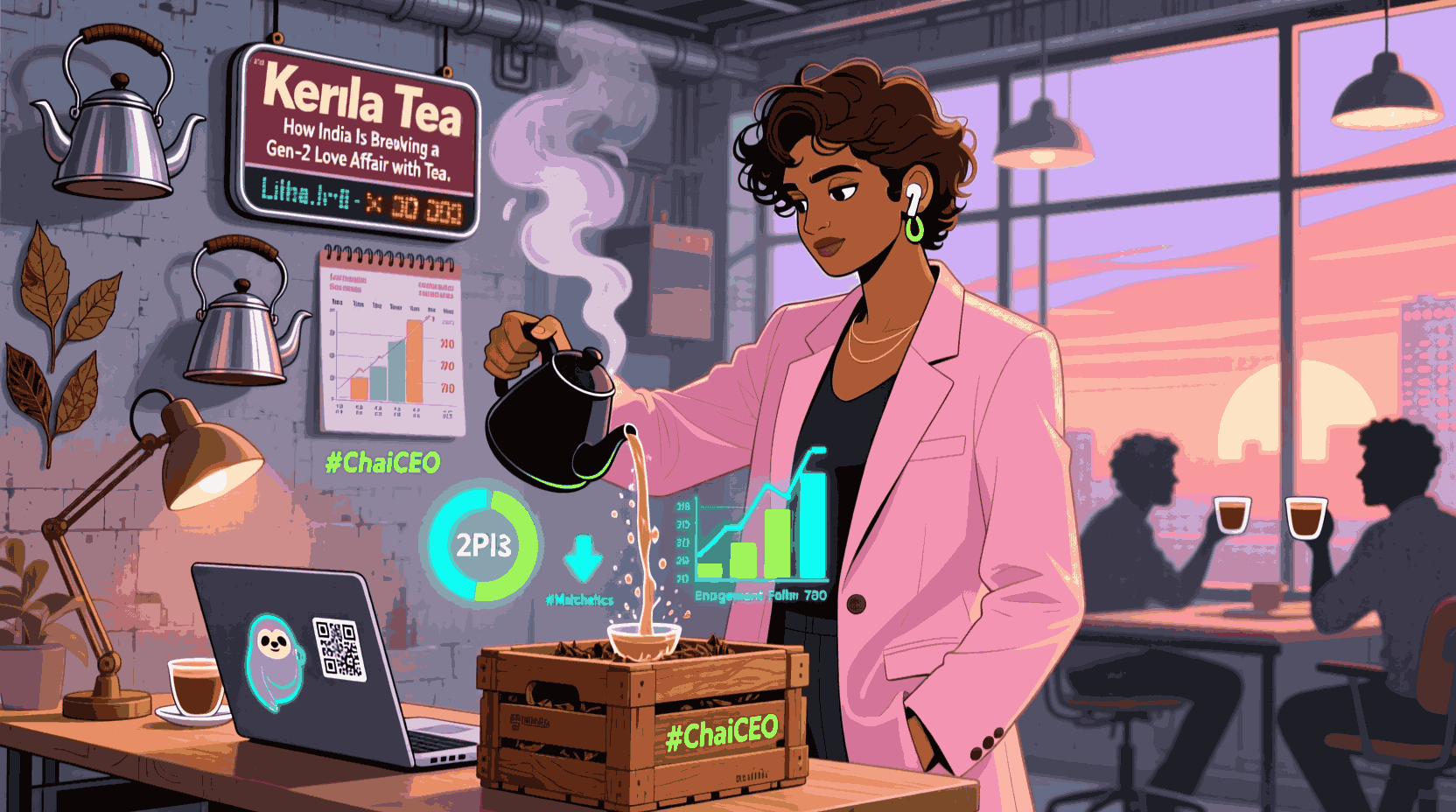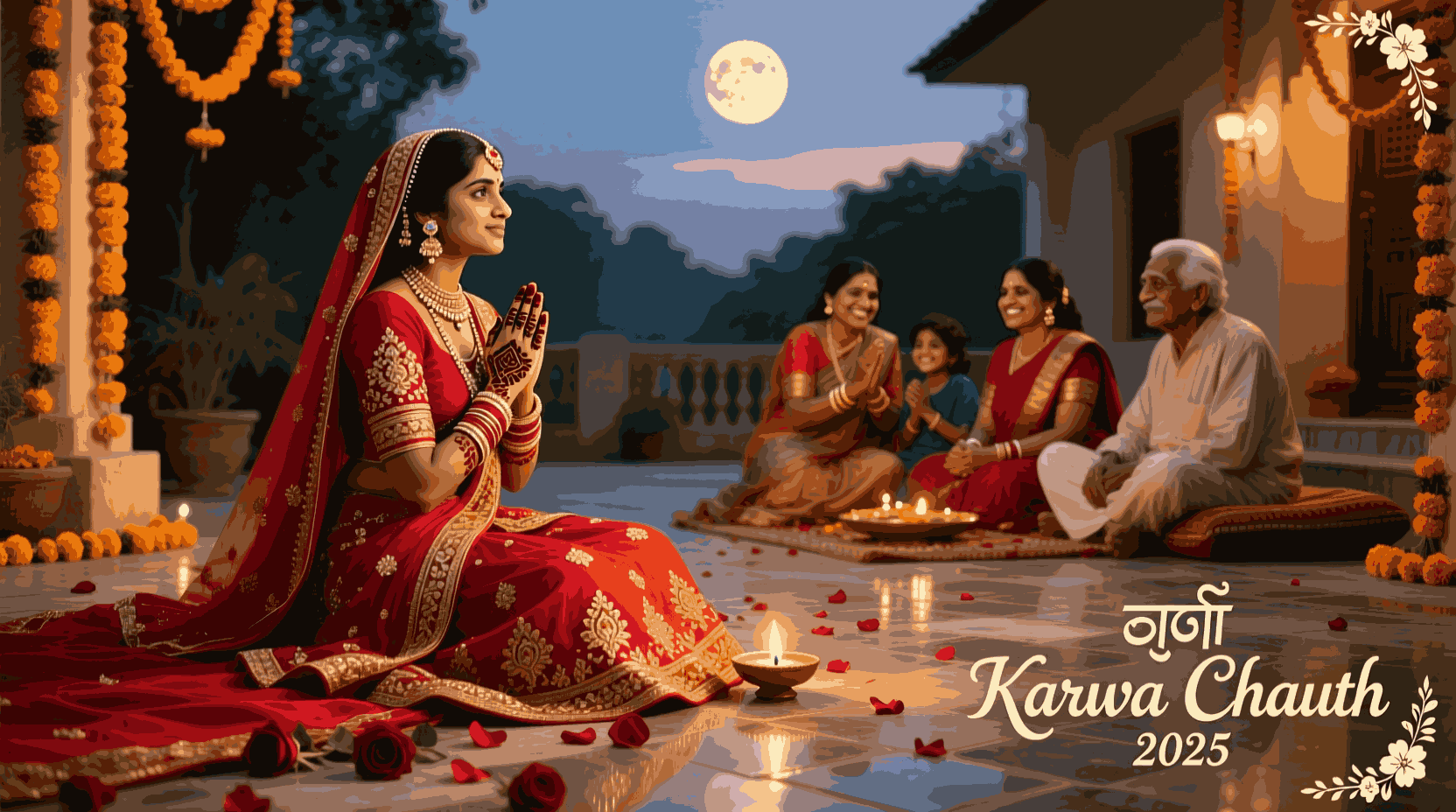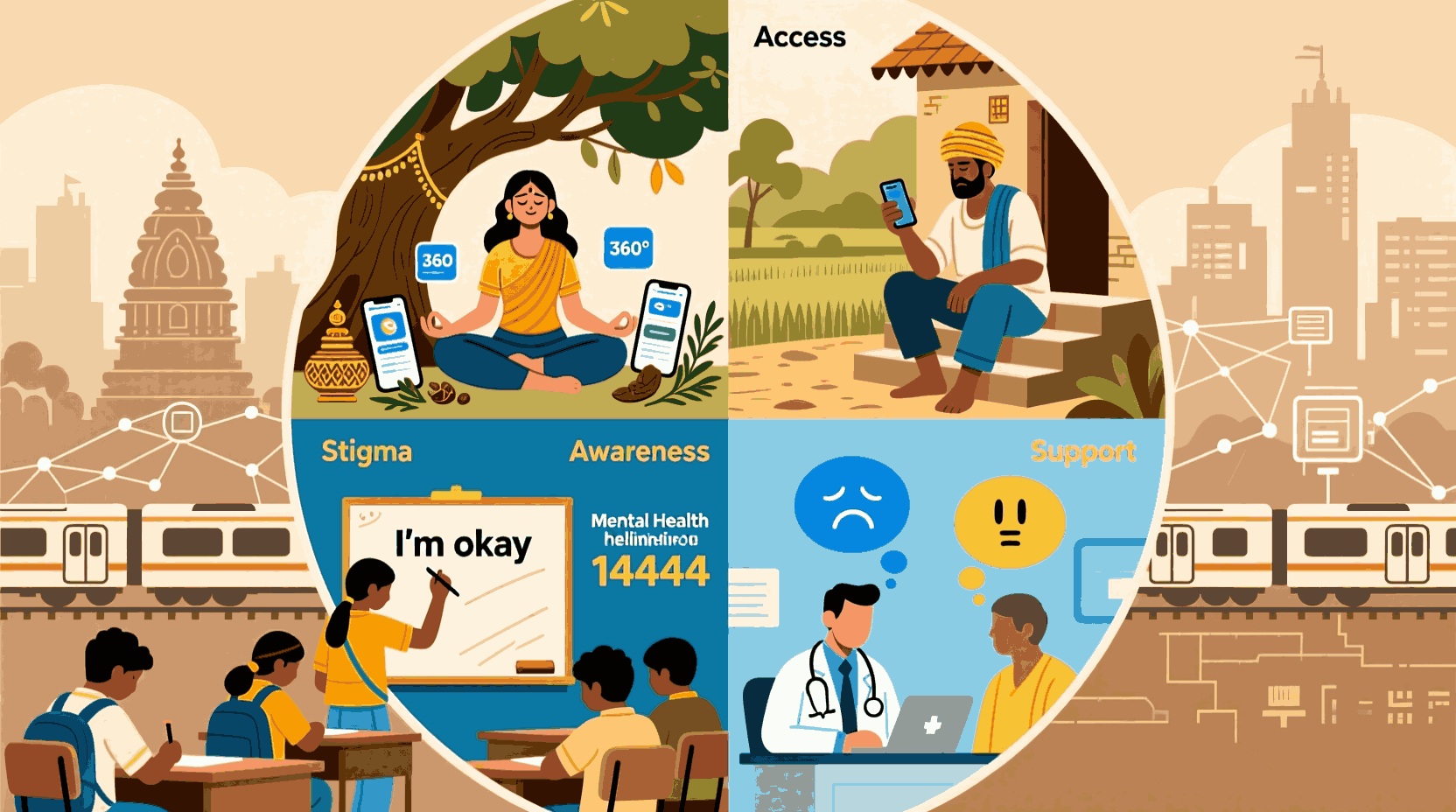Imagine walking into a neon-lit space that smells of jasmine, sandalwood and fresh-baked focaccia. A QR code on the table lets you tip the Nilgiris farmer who picked the leaves in your cup.
The menu?
A “Midnight Oolong Cold Brew” that changes colour when you squeeze in lemon, a “Turmeric-Smoked Latte” that promises to fix your screen-time eyes, and a deconstructed masala-chai ice-cream sandwich.
No, this is not a Brooklyn pop-up.
This is what Indian tea wants to become before Gen-Z decides coffee is the only beverage worth Instagramming.
Last month, under the chandeliers of the India International Tea Convention in Kochi, the country’s tea mandarins quietly admitted a bitter truth: India may be 99.9 % penetrated by tea, but the average citizen drinks less than a kilo a year—about what a Turkish grandmother finishes before March.
Worse, Gen-Z associates chai with railway platforms and grandfathers, not with “self-care” or “sustainability”. Coffee, with its 7-9 % annual growth and a café on every corner, has become the liquid symbol of urban aspiration. Tea is still waiting for the kettle to whistle.
So the sector has decided to do what every ageing icon does—reinvent itself. Call it Tea 3.0: same leaf, new life.
From commodity to cause
“Tea is not a drink; it’s a 200-year-old carbon-negative forest,” Mathew Abraham, outgoing president of the United Planters Association, told the convention.
Translation: every cup of Indian tea is grown under a canopy that sequesters more CO₂ than two Uber rides to the mall. The new pitch? Drink tea, save the planet—one sip at a time.
Expect to see carbon-footprint labels on pouches and NFTs of tea gardens that fund rewilding elephants.
Health halo > caffeine hit
While coffee sells the jolt, tea will sell the antidote: L-theanine for anxiety, catechins for immunity, polyphenols for that post-Netflix glow.
Harish Bhat, Tata Sons’ brand custodian, name-checked the 1980s egg campaign and the 1990s milk wave as proof that “generic good-for-you storytelling” can move the needle.
Translation coming soon to a Reel near you: “Swap your fourth coffee for a Butterfly-pea Flower Earl Grey and watch your cortisol crash.”
Location, location, location
Amuleek Singh Bijral, CEO of Chai Point, revealed that 80 % of tea is still drunk at office desks—yet cafés own the weekend footfall. His workaround?
Drop a micro-café wherever Gen-Z congregates. During the Prayagraj Kumbh, Chai Point erected seven stores out of 60 shipping containers, hooked 16 cloud-connected brewers to a central algorithm and served 2 million cups in 45 days.
Next stops: music festivals, metro stations, co-working parking lots—anywhere you can fit a 20-foot box and a Wi-Fi router.
Flavour democracy
HUL’s beverage head Sumit Patil put it bluntly: “If it doesn’t taste like Bubble Tea meets Berries meets Bangalore, it won’t trend.”
Expect a tsunami of limited-drop flavours—smoked pineapple oolong, masala espresso fusion, yak-butter matcha—dropped like sneakers, complete with wait-lists and Discord channels.
The national-drink hustle
Yes, Parliament has batted the “national drink” tag since 2012. But officialdom moves slower than a kettle on a coal stove. The new plan: skip the plaque, own the culture.
Think A.R. Rahman remixing kettle sounds, or Prabhas sipping Nilgiri frost-tea in Salaar 2. If you can’t legislate it, meme it.
A 48-hour blueprint for the curious reader
Friday 6 p.m.
Google “blue chai” and order butterfly-pea flowers. Steep in coconut milk, add lime, watch the colour flip from Smurf-blue to Millennial-pink. Post the Reel; hashtag #moodtea.
Saturday 10 a.m.
Bike to the nearest “Third Wave” tea pod (they’re popping up behind metro pillars). Ask for a zero-sugar, oat-milk Assam cold brew. Scan the QR code, tip the planter ₹5, screenshot the thank-you note from her daughter. Story it.
Sunday 9 p.m.
Host a chai-pairing dinner: pair a smoky Lapsang Souchong with biryani, a Darjeeling first-flush with cheesecake, and a turmeric-ginger infusion with keto brownies. Make everyone rate the pairings on a Google form. Collate the data, print certificates: “Certified Tea Influencer”.
The last drop
Coffee had a 25-year head start—espresso machines, latte art, Friends on a couch. Tea has heritage, health and 1.4 billion grandparents.
What it needs now is narrative velocity. If the industry can turn every cup into a carbon credit, every kettle into a conversation and every sip into a status update, Gen-Z won’t just drink chai.
They’ll own it, tweet it, mint it—and maybe, just maybe, save an entire plantation while they’re at it.
So the next time someone asks, “Coffee or tea?” you’ll know the correct answer is:
“Have you seen my tea NFT?”



